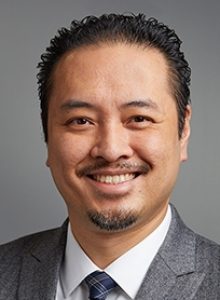Recommending a “social skills” group is a very common intervention seen in treatment plans of both children and adults living with autism. Despite their popularity, the evidence supporting the effectiveness of social skills groups in children is limited and the situation is more serious in adults living with autism. Nevertheless, many families, schools, and mental health providers remain committed to this intervention presumably due to its potential for and/or perception of effectiveness. Shifting our focus to adults, it might seem reasonable to assume that the group setting is an effective way to improve social interaction skills. In principle, the approach should yield positive results as it uses basic principles of experiential education in which the group leader teaches students through instruction, demonstration and direct experience within the learning environment. Moreover, practically everyone has had the experience being in a group either in the work, school or home settings. From their own experience, parents and professionals may have clear ideas on how groups operate and this can be erroneously generalized and assumed to be effective for adults living with autism. Even if there is some doubt about the effectiveness, there is a tendency to continue an intervention if there continues to be hope for benefit or assumption that the intervention is not harmful in any way. This is particularly easy to assume for non-medical interventions because the concept of “side effects” is more closely link to medication and supplements. However, all interventions have positive and negative aspects, including group interventions.

The best treatment decisions are made by careful consideration of risks and benefits. In group-based interventions for adults living with autism, this process becomes challenging because both risks and benefits may not be clear. The lack of sufficient information to conduct this decision-making process is cause for concern, especially the potential for long-lasting untoward effects of implementing an intervention that has more potential for harm than benefit. For example, if group intervention is recommended as a default treatment modality for adults living with autism and the effects are primarily negative, families and professionals are unknowingly worsening a known problem. In a landscape where resources are already very scarce, there is little room for error. In order to address this concern, the clinicians and researchers at the Yale Child Study Center created Community Autism Socials at Yale (Project CASY) which is an effort to better understand how group processes can benefit the ASD community. Project CASY is sponsored in part by The Daniel Jordan Fiddle Foundation Adult Autism Research Fund and a generous gift from the Rosen family.
Much of the benefits and risks of participating in an adult autism group intervention were gathered from interactions with the adults themselves, their parents and other professionals. Not surprisingly, none of the adults were interested in improving their scores on any clinical rating scale which is the focus of practically all clinical trials. Instead, concerns centered around reducing loneliness, wanting friends and starting romantic relationships. This may come as no surprise as these are high priorities for most people in their twenties, yet there are almost no intervention studies with “friend” or “significant other” as primary outcome measures. It was quite concerning to learn about the perceived negatives of group intervention. While most adults were interested or indifferent about attending groups, there was a significant minority adamantly opposed attending a group. Most of the adults in this minority reported having had years of “social skills groups” as children and adolescents and reacted negatively to the mention of attending another group. There was a general consensus that meaningful social interaction was not possible in these groups given the often discrepant verbal capabilities or the presence of disruptive and aberrant behaviors. Some felt awkward, out of place, misplaced and in the worst cases, stigmatized. The root of these concerns appeared to center be around poor fit and lack of adequate matching of group participants. Therefore, the group experience was quite aversive to this significant minority of adults living with autism. Most importantly, these groups not only created negative feelings at the time of attendance, but also long after they were over so they refused to attend any future groups. Therefore, if there were potentially helpful groups available, individuals who had a past negative experience would likely refuse these interventions altogether or they would negatively bias any new group experiences.
These and other factors create new challenges in creating helpful group interventions for adults living with autism. Because every adult has the right to choose and refuse, the group needs to be intrinsically rewarding in some way so participants want to attend and are willing to volunteer their time and effort. There are also logistical concerns for those who do not live at home and live on a college or other training campus. Easy access to appropriate transportation is also a formidable challenge. Since many adult attendees come to the group alone, group leaders must arrange for additional facilitators if they judge that they need additional support to carry of the group’s objectives. Some individuals may be working during the day, making their best available times in the evenings or outside regular business day hours. Generally speaking, any group would be competing for the potential attendees “free time” which is usually at their discretion to use as they wish. This highlights the importance that attendees must have of sufficient interest from the start. This must be sufficiently robust throughout to ensure the group program’s completion. Consequently, a group may need to put more weight on recreation, making the instructional components subtler. This is a departure from group interventions involving children who are often given little choice since their caregivers often make these decisions and they are more willing to comply.
Project CASY groups take into consideration the aforementioned challenges and are constantly evolving to improve the group experience for adults living with autism. Great care is taken because negative experiences could lead to indefinite participant withdrawal. One of the biggest challenges in the successful execution of a group is making sure participants are adequately matched. The process relies on having a large pool of participants which can be divided into smaller groups and matched on various characteristics such as age, verbal capabilities, interest, motivation and more. The Project CASY social networking website (http://www.meetup.com/ProjectCASY/) is instrumental in building a large online community. The primary function is to remove geographical and financial (there is no cost to join) borders which allows for a much larger community, thus greater number of potential participants. This increases the likelihood that participants will find compatible people since the population from which to choose is much larger. All are welcome to attend a monthly event entitled Social Gathering for Adults Living with Autism (Social GALA). This event is highly structured and focused on recreation. It provides a controlled and stress-free means for members to become acquainted with one another. The next step is selecting from these participants to form matched “hangout” groups. The idea behind CASY Hangout is to bring together a small number of attendees from the much large Social GALA. This small group (about 5-6 total) is chosen based on member feedback to organizers as well as organizers’ observations. Therefore, participants of a single CASY Hangout are matched on a variety of characteristics such as age, verbal capabilities, interest, and motivation. Given the size of Social GALA, many different groupings are possible. Activities of CASY Hangout are highly variable, but range from casually dining out to structured therapeutic games.
From this rough sketch of a group intervention for adults living with autism, it is clear that lots of time and effort is involved from the clinical team/organizers prior to forming functional social groups. Importantly, none of this is possible without the tireless support of parents and caretakers who are often the driving force of a participant’s consistent participation in group intervention. Thus, the process is highly collaborative and uses multiple modalities all in the spirit of promoting effectiveness. However, it is too early to comment whether this approach is truly effective because the project is also going thought its own experiential learning process. Over time, a protocol will be developed and trials will be conducted possibly including novel outcome measures as discussed previously. For updates and more information, please visit http://www.meetup.com/ProjectCASY/.
Roger Jou, MD, PhD, is Assistant Clinical Professor at the Yale Child Study Center and specializes in autism spectrum disorders across the lifespan. In addition, Dr. Jou is Medical Director at the Center for Translational Developmental Neuroscience at the Yale School of Medicine.






